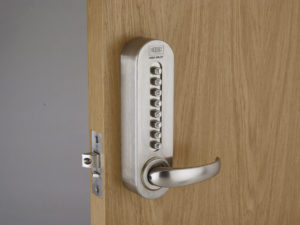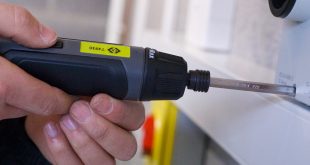Craig Birch, Product Category Manager at UNION, outlines what the new grade 5 for BS 8607 includes, why it has been introduced and the benefits that it can help deliver.
At present, mechanically opera ted push button locksets are not typically security products, but rather access control ones. For example, think about the last time you went to your local doctor’s surgery. No doubt there will have been a lock on the door behind the receptionist, protecting the sensitive information they hold – a demand that has become only more critical with the introduction of the new General Data Protection Regulation (GDPR). However, the truth is that the lock protecting the restricted area in question is probably little more than a tubular latch. Essentially, it’s not a security device, but rather one that is used for convenience to simply meet the access control needs of a site.
ted push button locksets are not typically security products, but rather access control ones. For example, think about the last time you went to your local doctor’s surgery. No doubt there will have been a lock on the door behind the receptionist, protecting the sensitive information they hold – a demand that has become only more critical with the introduction of the new General Data Protection Regulation (GDPR). However, the truth is that the lock protecting the restricted area in question is probably little more than a tubular latch. Essentially, it’s not a security device, but rather one that is used for convenience to simply meet the access control needs of a site.
However, BS 8607 – a standard for mechanically operated push button locksets – offers a series of grades that these locks can meet for strength and robustness. Introduced only recently, grade 5 is the newest and most stringent level for delivering assured security and access control. But what does it offer that grade 4 does not?
What is BS 8607?
The British Standards Institution (BSI) states that BS 8607:2014 specifies the requirements and test methods for durability, strength and function for mechanically operated push button locksets and their locking plates for use on doors, windows doors and entrance doors in buildings.
Both grade 4 and grade 5 of BS 8607 stipulate that products meeting these standards must be suitable for ‘applications where security, abuse and usage levels are expected to be equivalent to BS 3621’, which relates to thief-resistant locks.
But if the security, abuse and usage levels are the same, what then is the difference between the two grades?
What is the difference between grade 4 and 5?
Put simply, those rated as grade 4 can only achieve this standard with the help of an integral additional locking unit. So, with a grade 4 product, users must lock and unlock the solution from the inside with a key, and then operate the push button from the outside to unlock a door.
In contrast, a mechanically operated push button lockset that meets grade 5 standards provides a ‘one-stop’ security and access control solution; one that does not require a separate locking unit. In short, with a grade 5 product the latch and lock are integrated and tested together, without the need for an additional key. The result is a solution that offers keyless egress. This means that, when it shuts, a grade 5 solution automatically locks. Then, should you need to exit a room, it’s simply a one handle operation to unlock the door.
While it’s intended that both grade 4 and 5 devices offer the same resistance to attack and it’s simply the way it is locked that is different, the fact that a user has to physically lock a door themselves with a grade 4 product means the technology is reliant on key holders to secure the premises themselves. Ultimately, users have to take responsibility and ownership for the security of a site. But with a grade 5 solution, security is assured as the door will lock automatically.
Why has grade 5 been introduced?
Essentially, grade 5 has been introduced because it provides a BSI Kitemark approved certification. This means any mechanically operated push button locksets advertised as meeting grade 5 standards will be fully tested and inspected to this certification, offering complete peace of mind to users, installers and specifiers.
As a result, there is no question that a grade 5 product will meet the security and access control needs that so many commercial environments demand. A grade 4 product is reliant on an additional locking unit that meets BS 3621 being used too, whereas a grade 5 solution delivers assured protection and access control in a single package. Finally, the BSI Kitemark for a grade 5 solution is an official stamp of approval for the quality of the service offered.
To date, it is this combination of security and convenience that has not yet been seen in mechanically operated push button devices. Grade 5 of BS 8607 looks set to change all that.
UNION has just launched CodeGUARD 5, the first access control device available to meet the new BS 8607 grade 5 standards. Find out more at www.uniononline.co.uk/codeguard5.
 Builders Merchants Journal – BMJ Publishing to Builders Merchants and the UK merchanting industry for more than 95 years
Builders Merchants Journal – BMJ Publishing to Builders Merchants and the UK merchanting industry for more than 95 years



